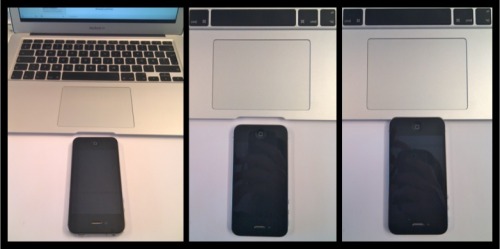 Kansas City Star | Stone tools discovery points to earliest Americans MSN India "It''s like finding the Holy Grail," Professor Michael Waters, who led the discovery, was quoted as saying. He said: "This discovery challenges us to rethink the early colonisation of the Americas. "There''s no doubt these tools and weapons are ... Discovery of artifacts in Texas may rewrite human historyThe Republic Archaeological discovery suggests first Americans followed Alaskan coastAlaska Dispatch Central Texans: first humans in America?KYTX Washington Post -Daily Mail -Ottawa Citizen all 362 news articles » |
Archive for the ‘Google Reader’ Category
Stone tools discovery points to earliest Americans – MSN India
Meet the future of the space program: Artificially-intelligent satellites [Video]
People Were Chipping Stone Tools in Texas More Than 15,000 Years Ago
Some 15,500 years ago early nomadic North Americans had already set up camp near Buttermilk Creek in central Texas's hill country, where they left behind impressive array of stone tools and artifacts. [More]
15,000-year-old campsite in Texas challenges conventional story of American settlement [Scientific Breakthrough]
FDA Suddenly Bans Drugs That Have Been On The Market For Decades
One way the drug companies have been coping is to repackage and rebrand health food supplements. Drugs like Lovaza, which is nothing more than the fish oil you can get in health food stores, and lovastatin which has been in use for roughly a thousand years (800 AD) in the form of red yeast rice. In the case of lovastatin, the FDA banned the supplements because they are "identical to a drug and, thus, subject to regulation as a drug." That is very convenient for the drug company, which now charges monopoly rents on the product -- which can increase prices at ridiculous levels.
More recently, the FDA banned 500 prescription drugs that had been on the market and working for years. To be fair, it was really 50-100 drugs (pdf), made by different companies, but that just highlights how there was actual competition in the marketplace for these drugs, which has now been removed. For all of the drugs, there is either a high-priced prescription version, or all the small manufacturers have been removed, leaving a virtual monopoly for one or more larger companies. This process began in 2006 when the FDA decided to remove marketed unapproved drugs (pdf).
The reasoning is that these drugs weren't ever technically "approved" by the FDA. While the FDA has been around for about a century, the business of having the FDA first approve drugs before they could go on the market came about closer to fifty years ago, and a bunch of "unapproved drugs" that were in common usage before that never got approved. The FDA is targeting many of those, even if they have a long history in the marketplace. Conveniently, of course, there always seems to be a pharma company with a monopolized substitute ready.
In 2006 the first "new" monopoly that was created by this FDA process was for the malaria drug quinine sulfate. This left only Mutual Pharmaceutical Company to manufacture quinine in the US (pdf). While malaria is not a disease that affects many people in the US, it is big business worldwide. Malaria causes 300 to 500 million infections and over 1 million deaths each year. Treating this disease with quinine used to cost pennies a day. In fact, the British turned this treatment into a cocktail, the gin and tonic (quinine water).
Another drug removed was the antihistamine carbinoxamine, which was created prior to needing FDA approval, in the early 1950s. It was approved by the FDA in a slightly modified form in 2006. It is now sold exclusively by Mikart, Inc and Pamlab, LLC with no future competition because the FDA has banned all 120 other versions of carbinoxamine. You can imagine just how much that must increase the profits for Mikart and Pamlab on carbinoxamine, though that seems to come at the expense of consumers.
It's really nice being granted a government monopoly.
As for the drugs now being banned in this latest purge, you can argue that it's not really 500 drugs, because many are different combinations of the same 50 to 100 drugs. To be sold, these disapproved drugs will require drug trials and certification -- a massive and expensive process. Under current law, after successful completion of FDA trials these drugs will be granted approval. But in every case these trials are almost certainly not necessary. And, "coincidentally" in almost every case, there is a chemically similar patented version ready to go. This is a pure money grab: replacing old tried and true drugs, with monopoly priced prescription drugs. It just requires removing competing drugs from the market to increase profits.
And with that, I'm off to go have a gin and tonic, while it's still legal...
Permalink | Comments | Email This Story
What we learned from 20 minutes of footage from J.J. Abrams’ Super 8 [Video]
Japanese repair quake-ravaged road in just six days
Filed under: Japan

 Due to the extensive damage in Japan caused by the massive earthquake and resultant tsunami on March 11, many have questioned if the island nation can recover in a year, much less a few months. If the swiftness with which the Japanese can repair roads is any indication, we wouldn't bet against the country cleaning up this catastrophe in short order.
Due to the extensive damage in Japan caused by the massive earthquake and resultant tsunami on March 11, many have questioned if the island nation can recover in a year, much less a few months. If the swiftness with which the Japanese can repair roads is any indication, we wouldn't bet against the country cleaning up this catastrophe in short order.As a result of the quake, a 150-meter section of the Great Kanto Highway in Naka was absolutely obliterated, with massive chasms running right through the middle of the road. Work crews at the NEXCO road repair company sprang into action on March 17, working at a fevered pitch to help get their country on the road to recovery, literally. Amazingly, after only six days of labor, the road is silky smooth and ready for travel. Look at the the before and after photos above to see just how amazing this feat is.
Given the fact that road crews in the U.S. can spend three or more months repairing a single lane of concrete, only to leave the orange barrels on the road for another two weeks, we're blown away by this feat of engineering. Simply amazing.
[Source: Daily Mail via Jalopnik | Images: AP Photo/NEXCO East]
Japanese repair quake-ravaged road in just six days originally appeared on Autoblog on Thu, 24 Mar 2011 12:30:00 EST. Please see our terms for use of feeds.
Read | Permalink | Email this | CommentsUnvisual Design: I don’t know if this is a sign of Apple’s…

I don’t know if this is a sign of Apple’s minute attention to details or if it’s just a coincidence, but the iPhone 4 fits very snuggly in the lid groove on the MacBook Air.
Color Picker Pen by Jinsu Park

Korean designer jinsu park designed a concept pen that adopts the eyedropper tool of photoshop for real life. The color picker pen enables colors in the environment to be scanned and instantly used for drawing. The sensor detects the color and matches it to the color display, then the RGB cartridge located within the pen mixes the inks together to create the color that has been scanned.




Read and see more entertaining articles here!
Design You Trust RSS Feed | Design You Trust on FB | Design You Trust on Twitter | Design You Trust



